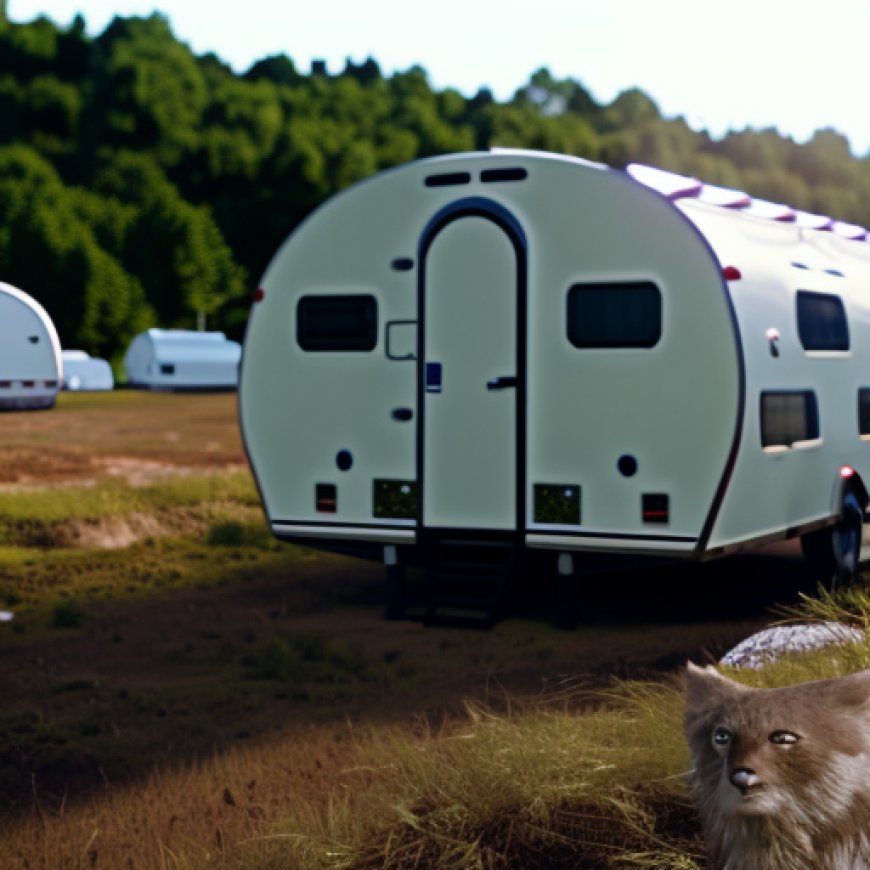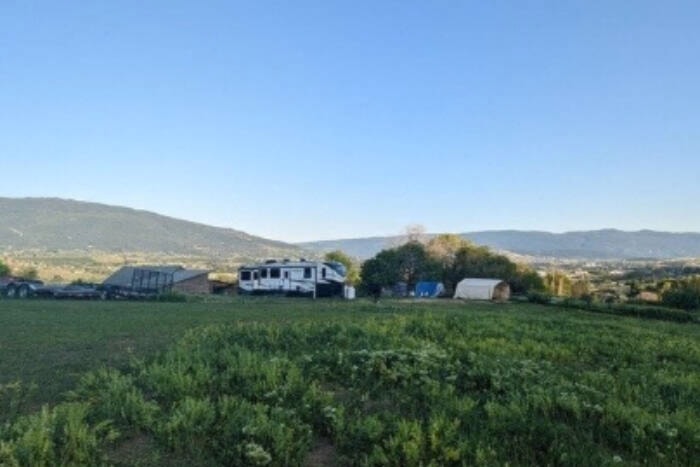Vernon considers allowing people to live in RVs on agricultural land
Vernon considers allowing people to live in RVs on agricultural land Revelstoke Review


The City of Vernon Considers Allowing RVs on Agricultural Land Reserve Property

The City of Vernon is considering allowing people to live in RVs on Agricultural Land Reserve (ALR) property, following a dispute with residents who were doing so “unlawfully” under the current regulations.
Bylaw Amendments Proposed
At its next meeting Monday, Nov. 27, Vernon council will consider bylaw amendments that would allow the provincial ALR Use Regulation to govern all uses on such lands, including primary dwellings, secondary suites, accessory dwellings and accessory buildings.
Recommendation to Refrain from Imposing Further Regulations
Staff are recommending that council opt not to impose further regulations on residential uses beyond what is stipulated by the Use Regulation and provincial legislation. The recommendation would see the city refrain from imposing extra restrictions or conditions of use and allow landowners to use RVs or other vehicles on ALR land without local constraints.
Victory for Residents
If the recommendation is supported by council, it would signal a victory for Lee and Sondra Watkins, who went public with their battle with the city to keep living in their RV on a four-acre family property in the Blue Jay neighbourhood of Vernon. The Watkins had been talking with the city to extend their stay in the RV as long as possible, but started receiving fines from bylaw over the last several months.
Support for Change
“We wish to continue to fight this for many other properties and people in the same situation,” the Watkins said in a change.org petition that has garnered more than 5,300 signatures since it was launched on Oct. 12.
Benefits of the Proposed Approach
Staff note this approach would allow for simplicity, as landowners and residents would mainly consult provincial regulations and not the city; it also would provide flexibility to landowners to determine residential use forms and locations on their property.
Affordability, staff say, is another strength to the suggested approach, as alternative dwellings like RVs could offer more affordable housing options and potentially ease housing shortages on ALR lands.
Staff note there would also be a reduction in bureaucracy, as fewer local regulations could lead to less administrative complexity and a quicker path to housing solutions.
Downsides to Consider
In the report to council, staff highlight a few downsides to the recommended approach, starting with a lack of local control when it comes to addressing local concerns like environmental impact, aesthetics and community character. There could also be land use conflicts between residential use and agricultural operations due to the absence of local regulations, and staff also note RVs might not offer stable long-term housing solutions.
Positive Response from Residents
Speaking to The Morning Star Friday, Lee Watkins said he and his wife are “very pleased to see that there have been some results from putting a little bit of pressure on city council” as signalled by the staff recommendation to permit their living situation on ALR land.
Proposed Alternative
Lee hopes the fines will be waived if council decides to go with the recommended option on Monday, but if that doesn’t happen, he proposes a unique alternative.
“We are happy to pay these fines, but if I could suggest, instead of paying bylaw for the $2,700 that we owe, you name a foundation or a charity and we will donate that amount to that charity,” Lee proposed. “I would prefer (the money) to go to a good cause, something important within this community that we love, that is so important to us.”
Other Options to Consider
Council may opt to go in a different direction on Monday. Under the recommended option in the report, staff note unregulated use could lead to an increase in RVs which could affect the landscape and possibly reduce agricultural land availability, or influence property values. The absence of local oversight could also raise issues about living standards in RVs, particularly in extreme weather conditions.
Council could choose to impose additional regulations that go beyond what is set out in the Use Regulation and provincial legislation. Going in this direction would mean revising a zoning bylaw to allow an accessory dwelling unit and authorize the use of RVs as accommodation on ALR lands “under specific conditions.” A framework would be designed to ensure compliance with conditions and guidelines aimed at reducing impacts on neighbouring properties and ensuring the health and safety of occupants.
Council could also decide to prohibit RVs as a residential use on ALR land, which staff note would ensure farming is the primary use of agricultural land but would limit options for affordable housing on those lands and may require “significant resources for monitoring and enforcement.”
Another option set out by the report is to allow the RVs on a case-by-case basis using temporary use permits, which are allowed under the Local Government Act for up to a three-year period with the option for an additional three-year extension. Staff note this would be a quicker way to address specific housing needs or situations, but there are also enforcement challenges and the “risk of perceived unfairness or inconsistency in decision-making.”
Supporting the First Option
Staff are supporting the first option because it aligns with the province’s strategic shift in the planning framework to accelerate more housing options for people in need, at a time when housing is a key issue across B.C.
Background Information
The Watkins have had an Agricultural Land Commission (ALC) officer out to their family’s property who, after an assessment, confirmed they were using the property agriculturally because they had farm animals on the property, and that they otherwise met all of the ALC’s requirements, Lee said.
In July 2021, the province introduced new legislation to enhance housing flexibility within the ALR, with the goal of supporting both farmers and non-farmers in sustaining their families and businesses. As of the end of 2021, the Use Regulation allows property owners to have an additional residence on their property without needing to apply to the ALC. The City of Vernon’s zoning bylaw was not updated following these provincial changes, and so the agricultural zones currently prohibit additional residences.
Lee says he hopes council will go with the recommended option, saying it would make the situation “as easy as it can be to just align ALR and the province regulations
SDGs, Targets, and Indicators Analysis
1. Which SDGs are addressed or connected to the issues highlighted in the article?
- SDG 1: No Poverty
- SDG 11: Sustainable Cities and Communities
- SDG 12: Responsible Consumption and Production
The article discusses the issue of allowing people to live in RVs on Agricultural Land Reserve (ALR) property. This issue is connected to SDG 1, as it relates to providing affordable housing options. It is also connected to SDG 11, as it involves sustainable cities and communities by exploring alternative dwelling options. Additionally, it is connected to SDG 12, as it relates to responsible consumption and production by utilizing existing resources (RVs) for housing.
2. What specific targets under those SDGs can be identified based on the article’s content?
- Target 1.4: By 2030, ensure that all men and women, in particular the poor and the vulnerable, have equal rights to economic resources, as well as access to basic services, ownership, and control over land and other forms of property.
- Target 11.1: By 2030, ensure access for all to adequate, safe, and affordable housing and basic services and upgrade slums.
- Target 12.2: By 2030, achieve the sustainable management and efficient use of natural resources.
Based on the article’s content, the specific targets that can be identified are:
– Target 1.4 relates to ensuring equal rights to economic resources and access to land for individuals living in RVs on ALR property.
– Target 11.1 relates to providing adequate, safe, and affordable housing options, including RVs, on ALR lands.
– Target 12.2 relates to the sustainable management and efficient use of resources, such as utilizing existing RVs for housing.
3. Are there any indicators mentioned or implied in the article that can be used to measure progress towards the identified targets?
Yes, there are indicators mentioned in the article that can be used to measure progress towards the identified targets. These indicators include:
– Number of individuals living in RVs on ALR property: This indicator can measure progress towards Target 1.4 by tracking the number of individuals who have access to land and economic resources through living in RVs.
– Availability of affordable housing options: This indicator can measure progress towards Target 11.1 by assessing the availability of affordable housing options, including RVs, on ALR lands.
– Resource utilization efficiency: This indicator can measure progress towards Target 12.2 by evaluating the efficiency of resource utilization, specifically the use of existing RVs for housing.
SDGs, Targets, and Indicators Table
| SDGs | Targets | Indicators |
|---|---|---|
| SDG 1: No Poverty | Target 1.4: By 2030, ensure that all men and women, in particular the poor and the vulnerable, have equal rights to economic resources, as well as access to basic services, ownership, and control over land and other forms of property. | – Number of individuals living in RVs on ALR property |
| SDG 11: Sustainable Cities and Communities | Target 11.1: By 2030, ensure access for all to adequate, safe, and affordable housing and basic services and upgrade slums. | – Availability of affordable housing options |
| SDG 12: Responsible Consumption and Production | Target 12.2: By 2030, achieve the sustainable management and efficient use of natural resources. | – Resource utilization efficiency |
Behold! This splendid article springs forth from the wellspring of knowledge, shaped by a wondrous proprietary AI technology that delved into a vast ocean of data, illuminating the path towards the Sustainable Development Goals. Remember that all rights are reserved by SDG Investors LLC, empowering us to champion progress together.
Source: revelstokereview.com

Join us, as fellow seekers of change, on a transformative journey at https://sdgtalks.ai/welcome, where you can become a member and actively contribute to shaping a brighter future.







